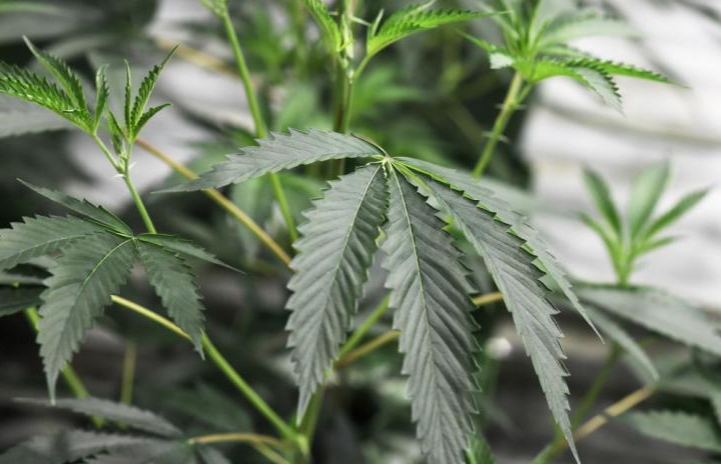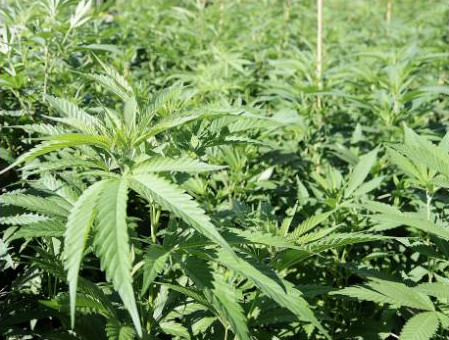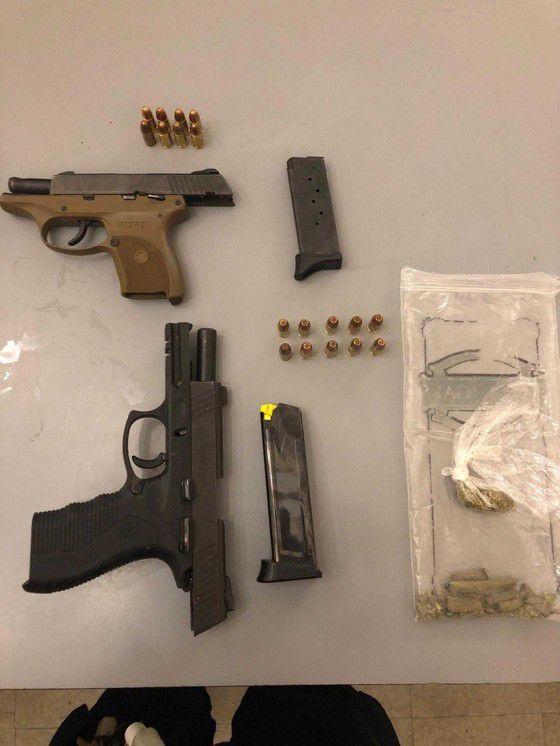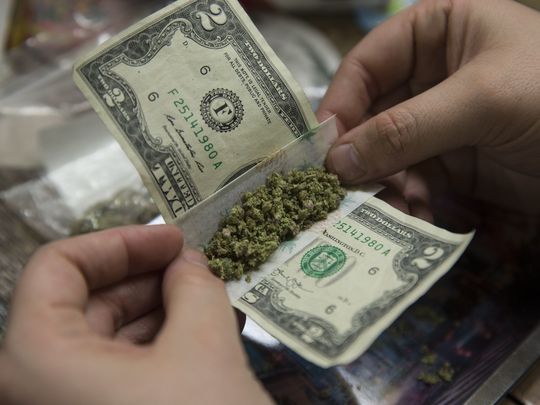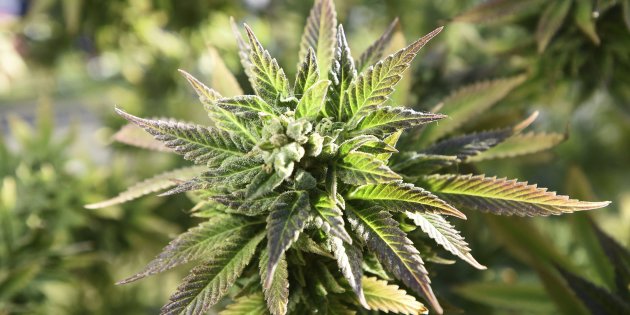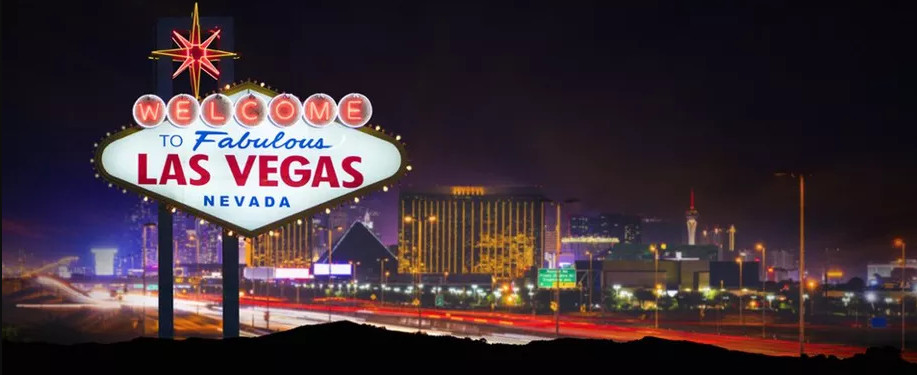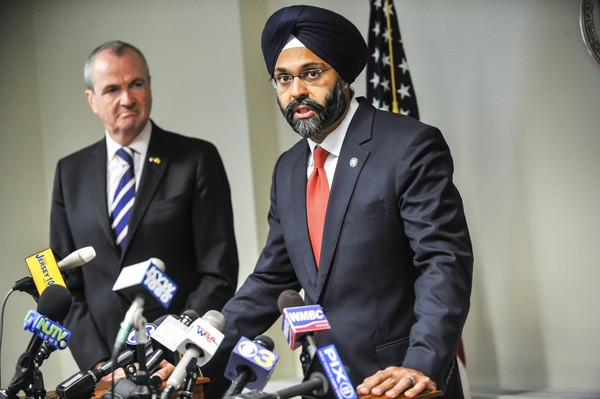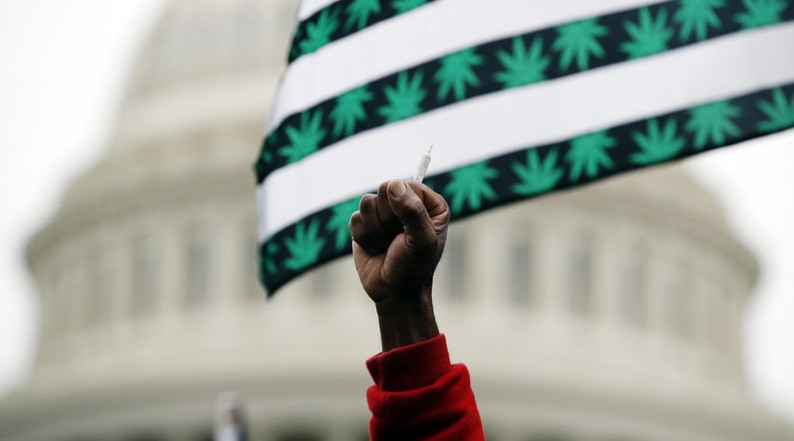Three journalists. Two states. One goal: To try to figure out how this whole “legal weed” thing works.
USA TODAY NETWORK New Jersey sent three journalists to Colorado and California to get a first-hand look, smell and taste at what the future holds for the Garden State if marijuana is legalized, as Gov. Phil Murphy and top legislators intend.
HIGH HOPES: New Jersey heading down a well-worn path toward legal weed
The journalists visited dispensaries. They got to know the people intimately involved with the cannabis industry, from entrepreneurs to regulators to local officials.
As the USA TODAY NETWORK New Jersey publishes its report on legal weed, the journalists sat down to talk about their experiences with business reporter Michael L. Diamond, a Denver native. The traveling journalists are:
- MIKE DAVIS (Asbury Park Press), a reporter and lifelong New Jerseyan who visited Colorado and spent time in the Denver metropolitan area.
- DOUG HOOD (Asbury Park Press), a photographer and videographer from Toms River who also visited Colorado.
- JAMES NASH (The Record), a Statehouse reporter who visited southern California, returning to the state where he lived for nearly 20 years.
Check out their conversation below the gallery, with breathtaking images of legal weed in Colorado!
Why did the USA TODAY NETWORK New Jersey decide to visit these states?
DAVIS: “People look at Colorado like they kind of have everything together. And that’s true in some aspects and it’s not true in other aspects, but it’s basically been the hotbed for marijuana both in terms of tourism and as a model. You’re going on four years now that it’s been legal with recreational dispensaries set up, and a medical program that was already prospering by the time recreational came around.”
HOOD: “My thought was, out in Denver, it’s like a science, all these different little bits and pieces of the entire industry. It’s evolved to that point already, where it’s not just legal marijuana. You go into a store, and it’s, ‘what is this strain going to do for me? How is it going to affect me?’ I thought that was really interesting.”
NASH: “I was in the Los Angeles area and southern California which, by most accounts, is the largest legal marijuana metro region in the world. California just came online for recreational sales in January of this year, so it’s still a pretty new industry, but California had medical marijuana for 20 years before that – and medical was largely a gateway to recreational for a lot of people.”
How is the culture of marijuana in these states with legal weed?
HOOD: “I didn’t really know what to expect when we got out there. you know? You have these visions in your head, but I think it’s really well-ingrained in normal, everyday society out there in Colorado. We actually went out there looking for this stuff, but I’ve told a number of people since I’ve been back that, if you just went out there for a family vacation or to see the Broncos play, it’s not like it’s in your face. It’s really kind of blended in, and I think people need to understand it’s not just going to be blasted in your face all the time.”
DAVIS: “I guess it probably depends on where you are, because Denver is not an example of what the rest of Colorado looks like. So in Denver, it seems like there’s a dispensary on every corner – and that’s not too much of an exaggeration, there’s something like 400 dispensaries in Denver alone. But we’d go to some of the suburbs around there and, obviously Doug and I are looking for them, but if we weren’t? I think it’s the kind of thing where, in some parts of the South, you’ll see a drive-thru liquor store. And it’s a very strange concept to somebody who’s lived in New Jersey his whole life, but you drive by and go, ‘Huh, that’s weird,’ and just keep going. And maybe you’ll go, ‘Remember when we saw that drive-through liquor store? Remember when we saw that marijuana dispensary?’
NASH: “I lived in California until October, and then came back for this reporting trip, and I wouldn’t say things were that dramatically different. Back then, you could smell marijuana almost anywhere in California, if you were out in public. It didn’t just have to be a concert or an event where you would expect it. It was there. It was in the culture. It was in the community, and it’s still there. That was true 10, 20 years ago. I wouldn’t say there’s been this huge shift in consumption, or the conspicuousness of marijuana. It’s just easier to get now – but it wasn’t all that hard to get before.”

Credit: app.com
Did you consume any marijuana?
DAVIS: “This should be a fun conversation.”
HOOD: “It’s been a long time but, you know, I’ve been known to smoke a bone or two way back when.”
DAVIS: “We have to talk about the bus at some point, because that kind of threw you in the middle of it.”
HOOD: “Yeah, that was an interesting bus ride. So there’s a tourism industry out there, and this guy set it up where you pay to get on this big, huge party bus and you actually tour the city of Denver. I hopped on after a tour of a dispensary and they could go in and purchase what they wanted. It was very strict, though: You couldn’t light anything up until the bus was moving.

Credit: app.com
“That’s the one thing about Denver – they follow the rules, they cross their T’s and dot their I’s. Once the bus started rolling, the papers were rolling, too. Everything was coming out. Bongs. Big joints. Everybody was just sitting back, smoking up and having a good time. The music was playing, the light show was going. It was… interesting to say the least.”
DAVIS: “It seemed kind of like a party on wheels more than a tour.”
HOOD: “That would be a good way to describe it. I would probably say I got a little contact high. I mean, I was working, trying to capture everything I could. It was about a 20-minute ride and, yeah, it was a lot of fun, I’ll say that.
“The whole thing was just smoked out and, if you could imagine, all the windows were blacked out and there’s these different saturated lights just changing, and it’s completely filled with smoke. But everybody was laughing. Everybody was having a really good time.”
NASH: “Since we’re talking about tourism here, one thing that’s been talked about in California is that they have really strict anti-smoking rules. If you’re a tourist in California, you’re probably not going to be allowed to smoke marijuana in your hotel, just like you wouldn’t be allowed to smoke a cigarette in your hotel.
“But the one handy thing they have is you can consume marijuana by eating it, which is what I did because I was staying in a hotel. So I ate churros – each churro has a 10 mg dose of THC, and there’s 10 of them in the bag. So if you eat the whole bag, you’re not going to be able to stand up. I had five, and I was feeling pretty bad, so I will probably not do that again. That’s one way to get around the whole question of smoking, because it’s still taboo in California, and probably most of the country, to be smoking in public. But you can sneak some marijuana churros.”
DAVIS: “Yeah, the folks we talked to in Colorado, they told us that the flower – the bud that people talk about when they smoke a joint – it’s going down, and it’s probably largely related to the fact that you can’t smoke in public.
“So, I don’t do drugs. I don’t even drink alcohol. I keep joking that, if you told 17-year-old me that I’d be writing about marijuana almost full-time, he’d say, ‘I can’t believe you broke edge, you poser.’ And you mentioned the social lounges, and that’s my story. I’ll preface this by saying that there were a lot of things we did in Colorado that blast through every stereotype you can imagine. But we went to a place called iBake, which is a members’ lounge in Denverand you could smell marijuana from the street, basically.

Credit: app.com
“You walk in and it’s like the grown-up equivalent of… If you took your mom’s basement, and made it a little bigger, and a little more professional. The tables were basically covered in paraphernalia – a couple different bongs, a couple different bowls and people just getting ripped the entire time.”
HOOD: “It reminded me of a dive bar here in New Jersey, kind of grungy looking but certainly not a bad atmosphere. It was just filled with smoke and people laughing and little bongs, big bongs, rolling papers. I think there were even some glass pipes for cannabis use too. People just showed up to take out their stash and everyone was sharing. ‘OK, you roll one up.’ ‘OK, you pass the bong.'”
DAVIS: “There was a kid from New Jersey we met, who was out there on vacation, and I think he was dabbing. It was the biggest smoke cloud of marijuana I’ve ever seen in my entire life. I was talking to someone else, and this kid leans down and inhales and this big cloud comes out. I don’t smoke weed. I never have, but I walked out of that place and literally had to say to myself, I think I’m high. I don’t know. I don’t know if I’m high. But I feel a little weird.And I got real bad – what I learned later was called – cottonmouth, where my throat and my lips were really bugging me. Listen, it went away pretty quickly but there was a certain bit of mystique to the fact that I think I got accidentally high in Colorado.”
What is it like purchasing legal weed at a licensed marijuana dispensary?
NASH: “You can just go in and buy marijuana in almost any form imaginable, ranging from the traditional smoked forms to things like peanut butter that has marijuana in it, or cookies and brownies – the old standby, but it goes way beyond that. It’s salad dressings and cannabis cooler drinks that are similar to Gatorade, but with marijuana in them. So if you’re an amateur, you don’t really know what you’re going to get.
“There’s a company I met with called Tokr, and they’re basically a cell phone app where you put in, ‘I am trying to get relaxed’ or ‘I am looking to pull an all-nighter,’ there’s even cannabis strains that are for sex, for people doing yoga. So the idea is that this can be integrated into your lifestyle in a ton of different ways, and the app kind of helps you navigate the strains of cannabis, where you can buy it and the form you consume it in because it’s really infinite.”
Watch a video of James Nash talking about the plethora of legal weed options at California dispensaries below!
DAVIS: “Yeah, the example I’ve used for people who aren’t familiar with is that it’s almost like a sommelier at a restaurant, but it’s even more than that because a sommelier won’t tell you, ‘this is going to affect your body in this specific way.’ But it really is all-encompassing: ‘How experienced are you? What are you looking to feel – ‘It’s a pain thing.’ ‘I want to get completely blazed out of my mind.’ ‘I just want to chill out a little bit.’ And then, do you want to smoke it or eat it or dab, or put oil on something?”

Credit: app.com
HOOD: “And every dispensary we went to, it was completely professional. It’s nothing like meeting your drug dealer on the corner. There’s glass countertops with everything on display. And you need to give them your ID, they have to give you a tag you have to wear while you’re in there. We were told a story about a 60-year-old lady who showed up without an ID, and they denied her because it’s the law.”
DAVIS: “When you talk about security, I was at Mesa Organics, this dispensary in Pueblo. I watched a guy walk in and give his license, and the woman told him: ‘Sorry, you can’t come in. This is an expired driver’s license.’ He went out and came back with a friend who had a good license, and then tried to go in with her and they stopped him and said, ‘No you can’t go in. Your license is expired. You cannot walk through the door and go into the dispensary.’
HOOD: “That was the other thing which I think is wonderful, that you need to be 21 years of age. Here, we go to the liquor store with kids in tow and you buy whatever it is you want to buy. You can’t do that out there.”
DAVIS: “Yeah, in New Jersey a kid gets a lollipop when they go with mom to buy wine. In Colorado, it’s: ‘You cannot cross this line. If you do, your mother will be fined and the shop will probably lose its license.’
NASH: “And these stores do have very intense security, at least the ones I went to. There was one with a guard at the front and, by the way, most liquor stores don’t have a guard at the front. Well, these marijuana stores do, and you could not leave the store without the guard letting you out.”
What issues did these states face that New Jersey should keep an eye on?
NASH: “One of the big things you hear here and in other states is driver safety because, I can tell you, after five churros, I would not want to be behind the wheel. And you would not want me behind the wheel either. So the question is, can police apprehend people who are under the influence? And the answer is ‘not very easily,’ because marijuana can’t be tested through a Breathalyzer the way alcohol can. And the California Highway Patrol, which is the main state police agency out there, they don’t have those tests.
“I spent a shift with one California Highway Patrol officer on a Friday night, when you’d expect to find people doing alcohol or marijuana or anything else, and he told me he’s only made two non-alcohol related arrests or citations for DUI in the two years that he’s been a CHP officer. And part of the reason for that is that you can’t test for it, so you have to rely on your own instincts as a cop. There was one example of somebody weaving in and out of lanes while I was with him, and he rolled down the window and smelled some marijuana in the car and he saw a green cross on a package the guy had. So there was already evidence that this driver was probably under the influence of marijuana, but the cop didn’t cite him. He let him go, maybe with a warning, but that was it.”
HOOD: “And there’s no exact science to it yet, either. Even if the cop said, ‘You know what? I think he’s under the influence’ and puts him under arrest, I don’t think there’s an exact science of how you measure it. There’s a lot of gray area where people are trying to figure it out.”
DAVIS: “One of the things we heard was anecdotal – so the Colorado Tourism Office says that 15 percent of people who visited Colorado in 2016 participated in a ‘marijuana-related activity,‘ which I would imagine means they got high in some capacity. And the thing we heard people talking about is that they’ve seen a car with a New Mexico or a Kansas license plate weaving down the road.
“And it’s because if you’re somebody who’s not used to this and just decided, ‘I’m going to try some of this marijuana I’ve heard so much about,’ then you won’t know that you’re so high you cannot drive a car. And you talk about the edibles, we went to Medicine Man in Denver and they have a little placard to explain, ‘so you want to try an edible? If this is your first time…’ There are people who will eat a cookie without thinking about what’s in it.”
NASH: “Yeah, and the police officer isn’t going to be able to tell either because your breath isn’t going to smell like marijuana if you just had a cookie or a churro.”
HOOD: “And that reminds me of another thing – the labeling of all these edibles product. It was just free range in the beginning and nobody knew what kind of doses they were taking. That’s one thing that New Jersey can learn a lot from, actually labeling these edible products so people know how much they’re taking.”
DAVIS: “James, with your churros, were they imprinted with the actual food to say ‘this is 10 mg of cannabis’?”
NASH: “The labeling on the package does indicate each one was 10 mg of THC and another 10 mg of CBD, so if you know how much that means to you specifically, you can control your dosing. But it’s harder to do that with some of the other products. They had marijuana cheddar Goldfish crackers and maybe you say, ‘a fistful of these is about 10 mg,’ but you have no way of knowing for sure.
“In addition to the ride-along I did with the CHP, I did a series of visits with the state Bureau of Cannabis Control and the violation they found in the stores most frequently was the issue of dosing on the edibles. The products that are much higher to segment, including the peanut butter where you don’t know if you’re smearing 10 mg or less with a knife full on the sandwich. They ordered those products off the shelves.”
DAVIS: “Labeling is one of the things I’ve heard, even before we went to Colorado, that people are saying New Jersey has to pay attention to and get it right from the start. You don’t want to have a six-month gap or a yearlong gap before you figure it out.”
HOOD: “And there were a lot of people out there that we spoke with that said they’re willing to share whatever they know to help this go the right way. They were saying, ‘we want to talk to people. We’ve had some bumps in the road and can help.'”
Mike Davis; @byMikeDavis: 732-643-4223; mdavis@gannettnj.com
James Nash; @jmnash: 973-459-8601; nashj@northjersey.com
Credit: app.com



